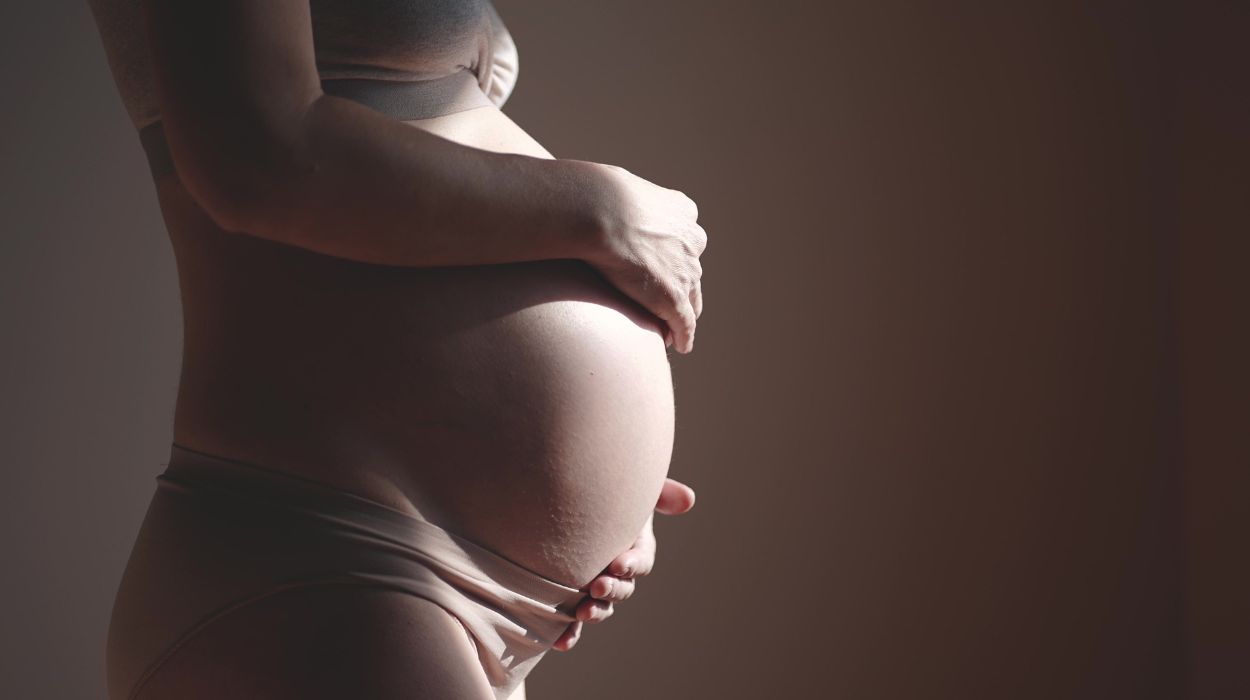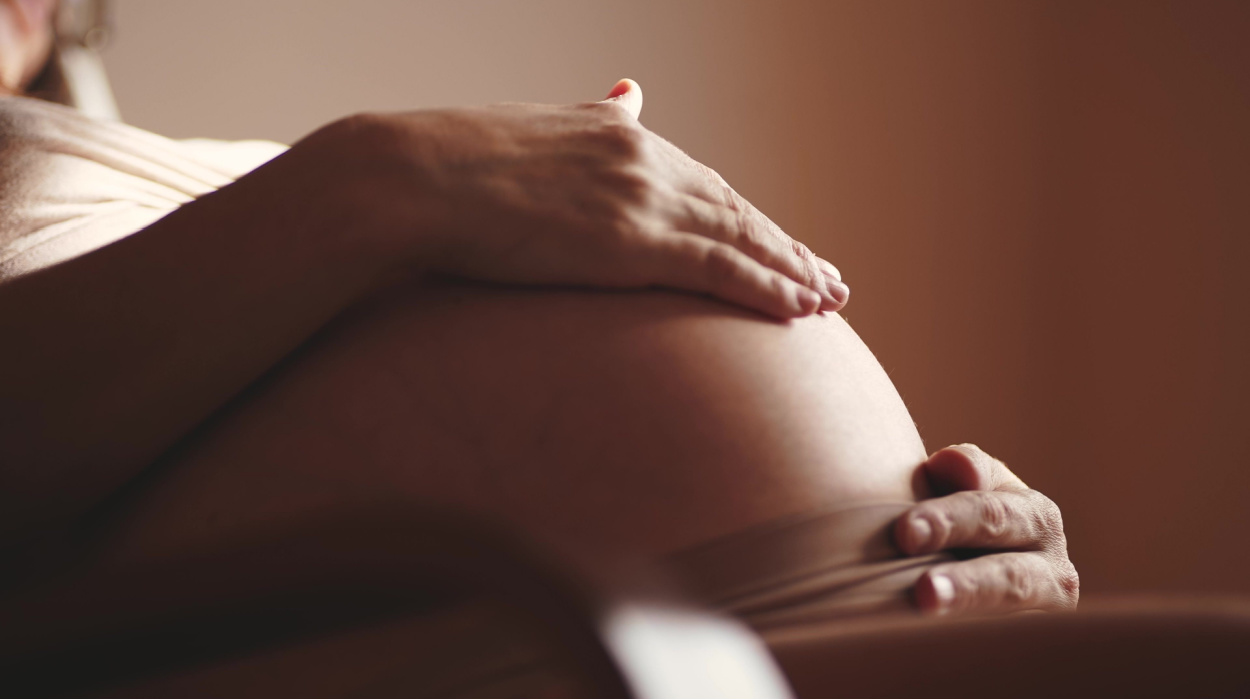 Author's opinion
Author's opinion
When Do You Start Showing In Pregnancy? Baby Bump Progression 2024

4 stages you should know. Photo: ibragimova/Shutterstock
When will you start showing a baby bump? Each pregnant woman’s body and baby’s development are different, but most women begin to notice a little bump within the first few months.
Some women will show before others do, and many factors come into play that determine when you’ll notice your growing bump. For example, carrying multiples may reveal your pregnancy earlier. Depending on your age, body type, the tone of your stomach muscles, and the baby’s growth, pregnancy’s visible signs can vary.
There’s no way to tell for sure when you’ll show this pregnancy, your next pregnancy, and so on. So let’s go over the most common times you could start showing in your first and subsequent pregnancies, what determines how soon your belly shows, and what to do if you haven’t started showing yet.
When Do You Start Showing – Pregnancy?
Pregnancy displays itself differently in every woman, with some noticing a growing belly in the first trimester, while others may not show noticeable signs until the second or even third trimester. This can be particularly true for overweight women. It is typical for a pregnancy to start visibly showing around the 20th week, however, this can vary greatly and is unpredictable.
Showing earlier or later than this time frame generally doesn’t indicate any problems. The key focus should be on the health of the fetus, including its growth and heart rate, rather than external appearances. The timing of when your baby bump becomes visible depends on several factors such as your physical attributes, your age, the number of babies you’re carrying, and your previous pregnancy history.
When Do You Start Showing In Pregnancy?
How many weeks do you start showing? For some women, a growing belly is one of the first signs of pregnancy and can be visible to them during the first trimester. For others, their pregnancy may not begin to show until later in the second or sometimes even the third trimester, especially if they’re overweight.
Pregnant women typically start showing around pregnancy week 20, although this varies and is unpredictable. Showing earlier than this isn’t a sign of anything to be concerned about, and typically neither is showing later on. Regardless of outward signs, it’s the inside that counts — healthy fetal growth and heart rate.
Your baby bump reveal will depend on the physical aspects of you and your baby’s body, how old you are, how many babies you’re carrying, and how many pregnancies you’ve had.
In First Pregnancy
When do you start showing pregnancy symptoms if this is your first baby? Signs of expecting a baby can come — and change — at various times throughout your trimesters. When it comes to your baby bump, women commonly start to show a growing belly between weeks 12-20 during the second trimester. The thinner you are, the earlier you’re likely to show.
In The Second Pregnancy
How many weeks along do you start showing if you’ve been pregnant before? Since your abdominal tissues, skin, and uterus have experienced stretching and growing from your previous pregnancy, when your second child comes along, your body has a been-there-done-that mentality and can grow and stretch faster than the first time around.
The laxity of ligament support for your uterus — from prior stretching — is likely to allow your uterus to fall forward, creating the bump earlier than women with their first pregnancy. You may also feel the baby’s movements sooner.
In The Third And Subsequent Pregnancies
Depending on your current weight and how well your muscles heal post- pregnancies, you are likely to start showing fairly early in your third and subsequent pregnancies.
With Twins
How soon do you start showing if you’re carrying multiples? If you’re carrying twins, triplets, or more, expect to start to show in the early stages of pregnancy, commonly in the first trimester.
Since more than one baby means a faster-growing uterus, you may look and feel months further along than another pregnant mom carrying just one baby. Your morning sickness may be more severe and come earlier, too.
Why Do Some Pregnant Women Show Earlier?

Besides how many pregnancies you’ve had determining how soon a pregnancy shows, let’s look at several factors that can affect your baby bump progression.
Uterus Positioning
Did you know that women can have different tilts to their uterus? Your uterus may be retroverted and tilted forward — or anteverted — and slant backward. If you have a uterus that tilts forward, you may show earlier than someone whose uterus is leaning towards the back. This is especially true after a first pregnancy, when those ligaments of support may be more relaxed.
Baby’s Growth
How fast or slow your baby grows and if you’re carrying more than one baby can also determine when your pregnant belly appears. In addition, certain conditions may cause a delay in your baby’s growth, resulting in more or less baby bump growth.
In the later trimesters, high blood pressure can be a risk factor for a smaller baby with an altered blood supply decreasing the amount of nutrition through the placenta. At delivery, if your baby has a lower weight than most, it may have difficulty regulating its body temperature or maintaining adequate oxygen levels. So taking care of your health will also help to take care of your baby’s developmental needs.
Being overweight can place a higher risk for conditions like gestational diabetes, which can cause your baby to be overweight or suffer other health concerns.
Age
Being older can result in showing earlier if muscle definition is poor, especially if the pelvic and abdominal muscles are not fit or toned.
Body Type
The type of body and build a woman has can determine how early her baby bump appears. For example, suppose the mother is athletic and fit. In that case, the tighter muscles may hold and support the uterus longer than someone with weak abdominals or diastasis recti from a prior pregnancy.
Taller women tend to have more room in their trunk for a growing baby and may not show until later on in pregnancy compared to shorter women.
Some women who have a higher body mass index may carry extra weight on their midsection and may look further along in pregnancy than they are or have a B-shaped belly, instead of a D-shape, until later into the third trimester.
Uncontrolled weight gain can increase your risk of gestational diabetes mellitus, which can lead to problems regulating blood sugar and more. To help avoid this condition, it’s essential to eat a well-balanced diet, get good sleep, stay physically active, hydrate well, and take a prenatal vitamin to help promote your and your baby’s overall health.
Now that you’ve read about the unpredictability of when a woman’s belly starts to show her pregnancy let’s take a look at how your baby bump may progress along the way.
Baby Bump Progression
Before you know it, you’ll be sliding into comfy maternity clothes and allowing your pregnant belly to change and grow at its own pace. Some women will find their clothes no longer fit even before the baby bump. This is because the pregnancy shift in hormones will change their body shape, e.g., waistline, which is important in a proper fit.
By around week 12, your baby bump will have grown enough that it will be large enough to be felt just above your pubic bone. Then around week 16, the top of your uterus will rest about four fingers’ width below your belly button.
After about 20 weeks, your growing uterus will increase by about 1 centimeter each week.[1]
You can usually feel your growing belly, or fundal height, at the level of your umbilicus by week 20, and then it’s measured in centimeters according to gestational weeks. These measurements may be atypical if you have a history of fibroids,[2] abdominal surgery, multiple babies, or a high body mass index.
The average belly size toward the end of the third trimester in week 38 will measure about 35-41 centimeters[3] from the pubic bone up towards the top of your uterus, which can be felt.
What If I Haven’t Started Showing Yet?
At any point during pregnancy, if you are concerned about your baby’s development or wondering why you are not showing yet, be careful not to dwell on the worry that may cause unnecessary stress. Be proactive and reach out to your midwife or doctor for professional medical advice. Always remember, it’s not what happens on the outside, but what’s happening inside.
Often, a due date may be incorrect, and gestational age could be miscalculated, so your belly may start showing sooner or later than you think you should.
Conclusion
Many women anticipate growing their baby bump and the pregnancy journey almost as much as their baby’s arrival. There’s no set-in-stone gestational age or definitive answer to when your belly will start to show; every woman’s body and baby are unique. Yet, traditionally it’s common to start seeing a bump around weeks 12-20.
Factors that can sway an early or late belly appearance include lean body weight, how strong your abdominal muscles are, and which direction your uterus tilts — in the first trimester. These, plus whether or not you’re carrying more than one baby, will skew the appearance to larger, sooner — in the second and third trimesters. Tall women can show later on in pregnancy while being older or having given birth to more than one baby can result in a first-trimester appearance.
By the time pregnancy comes to an end, your belly will roughly measure 40 centimeters.
If you get into the later weeks of your second trimester or begin your third trimester and still don’t feel like you’re showing, contact your health provider for a thorough assessment and reassurance. Sometimes a breech baby can present like this. Also, if the placenta is attached at the bottom of your uterus, your baby will sit higher and make the uterus seem larger and further along. Again, it’s what’s happening inside that’s important.
Resources
MANA adheres to strict sourcing guidelines and abstains from utilizing tertiary references. We rely on peer-reviewed studies, academic research from reputable medical associations and institutions to ensure the accuracy of our articles. For more information regarding our editorial process, please refer to the provided resources.
- Naidu, K. and Fredlund, K.L. (2023). Gestational Age Assessment. [online] Nih.gov. Available at: https://www.ncbi.nlm.nih.gov/books/NBK526000/.
- Mayo Clinic. (2022). What does fundal height measure in pregnancy? [online] Available at: https://www.mayoclinic.org/healthy-lifestyle/pregnancy-week-by-week/expert-answers/fundal-height/faq-20057962.
- Dias, T., S. Abeykoon, S. Kumarasiri, Gunawardena, C., G Pragasan, T. Padeniya and A. Pathmeswaran (2016). Symphysis-pubis fundal height charts to assess fetal size in women with a normal body mass index. Ceylon Medical Journal, [online] 61(3), pp.106–106. doi:https://doi.org/10.4038/cmj.v61i3.8345.






